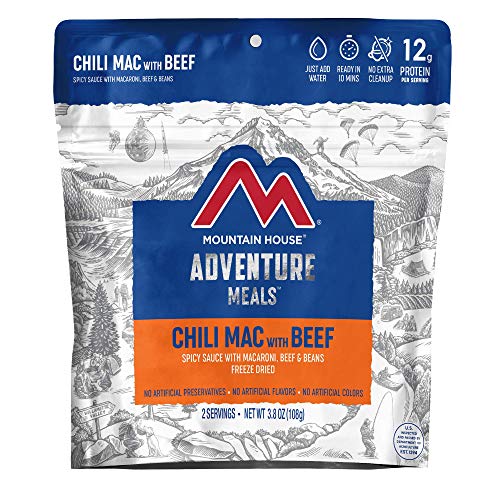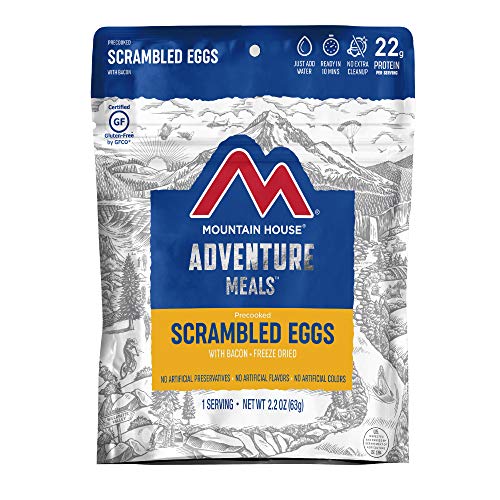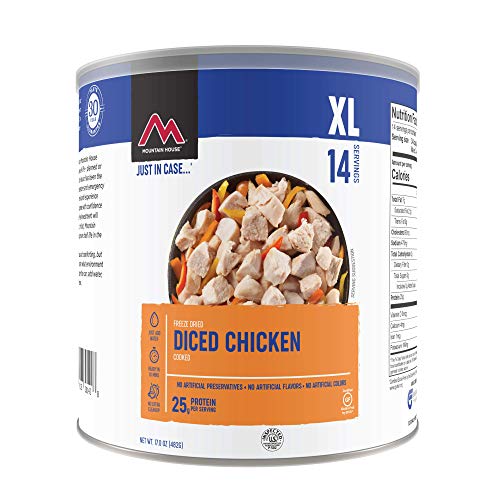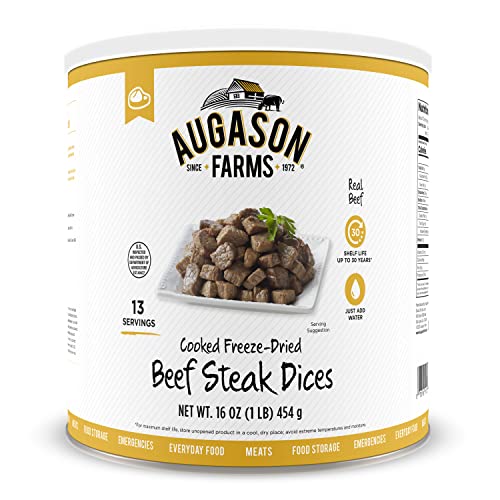During times of uncertainty or in emergency survival situations, having a well-stocked pantry with an emergency food supply, including survival food buckets and emergency food storage, is an essential part of being prepared. This comprehensive guide will help you understand the importance of prepper food, what to look for when purchasing, and the best options available from top survival food companies.
Importance of Survival Food
Survival food, also known as emergency food, is designed to be stored for long periods and used in situations where regular food supply is disrupted. This could be due to natural disasters, pandemics, power outages, or other emergency situations. The key benefits of having an emergency food supply are numerous.
- Long Shelf Life:Most survival food options, known for their long shelf life, can last between 10 to 30 years if stored properly. This long-term food supply allows you to purchase food in advance and not worry about it spoiling, ensuring long-term food storage is secure.
- Nutrient-Rich:Survival food is usually high in calories and nutrients, providing the essential energy and nutrition your body needs in stressful situations.
- Easy to Prepare:Most survival food only requires adding water and heating, making it easy to prepare even in challenging circumstances.
What to Look for in Survival Food
When purchasing survival food, here are some key factors to consider:
- Shelf Life:Look for products with a long shelf life. The longer the shelf life, the better, as it ensures the food will be safe to eat when needed.
- Nutritional Value:Check the nutritional information to ensure the food provides an adequate amount of calories, protein, and other nutrients.
- Taste:While not the most important factor, taste can make a big difference in a stressful situation. Try to find survival food that you and your family would enjoy eating.
- Preparation Requirements:Consider how easy the food is to prepare. In many emergency situations, you may not have access to a full kitchen.
- Packaging:Look for food that is packaged in a way that protects it from air, moisture, and pests. This will help to extend its shelf life.
Top 5 Survival Foods
Survival scenarios require foods that are not only nutritious but also have a long shelf life and are easy to store and transport. Here are the top five survival foods that meet these criteria:
1. Rice
Overview
- A staple food for more than half of the world's population
- High in carbohydrates, providing much-needed energy
Types and Benefits
- White Rice: Long shelf life when stored properly; lacks some nutrients
- Brown Rice: More nutritious but has a shorter shelf life
Storage Tips
- Keep in a cool, dry place
- Use airtight containers to extend shelf life
2. Beans
Overview
- Excellent source of protein and fiber
- Comes in many varieties, offering diverse nutrients
Types and Benefits
- Black Beans: Rich in antioxidants
- Lentils: Quick cooking time and high in protein
Storage Tips
- Store in airtight containers
- Keep in a cool, dry place to extend shelf life
3. Canned Foods
Overview
- Long shelf life and easy to store
- Variety includes fruits, vegetables, meats, and fish
Benefits
- Immediate food source without the need for preparation
- Can include items like canned beans and tomatoes, which are rich in nutrients
Storage Tips
- Store in a cool, dry place
- Regularly check expiration dates and for any signs of damage or swelling
4. Nuts and Seeds
Overview
- High in calories, proteins, fats, and other nutrients
- Compact and easy to carry
Types and Benefits
- Almonds: Good for heart health
- Flaxseeds: High in omega-3 fatty acids
Storage Tips
- Store in airtight containers to prevent rancidity
- Refrigerate to extend shelf life
5. Dried Fruits
Overview
- Long shelf life and high in nutrients
- Easy to store and transport
Types and Benefits
- Raisins: High in iron
- Apricots: Rich in Vitamin A
Storage Tips
- Keep in airtight containers
- Store in a cool, dry place to maintain freshness
By focusing on these top five survival foods, individuals can ensure they have access to essential nutrients and energy sources in any survival scenario, while also benefiting from ease of storage and preparation.
Other Best Survival Food Options
There are many different types of survival food available, each with its own benefits and considerations. Popular options include emergency food kits, emergency food rations, survival meals, and emergency meals.
Long-Term Survival Food
Long-term survival food, such as freeze-dried emergency food from brands like ReadyWise and Mountain House Food, is designed to last for many years, sometimes up to 30 years or more. These foods are typically freeze-dried or dehydrated to remove moisture, which helps to preserve them. They are then sealed in airtight packaging to protect them from air and moisture.
Long-term survival food options often include meals like pasta, rice, beans, fruits, and vegetables. These foods can be rehydrated and cooked when needed. Some long-term survival food options also include freeze-dried meat and freeze-dried fruit, which can be a valuable source of nutrition in an emergency.
Short-Term Survival Food
Short-term survival food is designed for situations where you may need to survive for a few days to a few weeks. These foods typically have a shorter shelf life than long-term options but are often more convenient and easier to prepare.
Short-term survival food often includes ready-to-eat meals, snack bars, and canned goods, such as those found in 72-hour kits, meal pouches, and food pouches. These MRE meals can be eaten as-is or heated up, making them a convenient option for situations where you may not have access to a full kitchen.
Specialty Survival Food Kits
Specialty survival food kits, including gluten-free food options, cater to specific dietary needs or preferences. Whether you're looking for gluten-free foods, vegetarian or vegan meals, or options designed for particular health conditions, these kits have you covered.
Specialty survival food kits can be a great option for those with dietary restrictions, ensuring you'll have access to food that meets your needs in an emergency.
Meat & Protein Survival Food Kits
Meat and protein are crucial for maintaining strength and energy in an emergency. Meat & Protein Survival Food Kits, featuring a variety of meats like ground beef, diced chicken, and diced beef, as well as high-protein foods like beans and legumes, ensure you're well-prepared.
These kits are typically freeze-dried or dehydrated to preserve the food, allowing them to be rehydrated and cooked when needed.
Fruit & Vegetable Survival Food Kits
Fruits and vegetables, essential for providing vitamins and nutrients, are a vital part of any survival food supply. Fruit & Vegetable Survival Food Kits include a variety of freeze-dried or dehydrated fruits and vegetables, which can be rehydrated and eaten as-is or added to meals, including nutrient-rich micro greens.
Most of these kits include a variety of fruits and vegetables, ensuring you can maintain a balanced diet even in an emergency situation.
Survival Food Kit Bundles
Survival food kit bundles, including patriot food supply kits and bulk emergency food options, offer a convenient way to build up your emergency food supply. These bundles typically include a variety of different foods, providing you with a balanced diet and ensuring you're prepared for any situation.
Most survival food kit bundles include a mix of entrees, breakfasts, snacks, fruits, vegetables, and meats, making them a cost-effective way to build a diverse food supply.
Water for Survival
In addition to food, having access to clean, emergency water is critical in an emergency. It's recommended to have at least one gallon of water per person per day for drinking and sanitation.
Water storage tanks and filtration systems can ensure you have access to clean, safe water. Personal water filtration devices can also be useful, especially if you need to leave your home.
Survival Gear & Accessories
In addition to food and water, having the right survival gear, including emergency preparedness items like first aid kits, survival kits, cooking supplies, and solar power generators, can make a significant difference in an emergency. Having these items on hand can help you stay safe, warm, and fed.
Power & Solar for Survival
In many emergency situations, access to power can be disrupted. Having a solar generator or other renewable power sources can be invaluable, with solar lights and power banks also being useful for keeping your devices charged and providing light.
Home & Health for Survival
Your home and health are also important considerations in emergency preparedness. Investing in air filtration systems, vitamins and supplements, lighting and batteries, and survival seeds including heirloom and sprouting seeds, can help you maintain your health and wellbeing during a crisis.
Final Thoughts
Being prepared for an emergency situation is crucial. Having a well-stocked pantry with survival food, clean water, and essential survival gear, alongside food storage and an emergency food supply, can provide peace of mind and security in uncertain times. Remember, the key to successful preparation is to start early, plan ahead, and choose high-quality, long-lasting products.
Keywords: survival food, camping food, camping food ideas, best camping food, survival food kits, best survival food, easy camping food, food for camping, camping food list




